 |
|
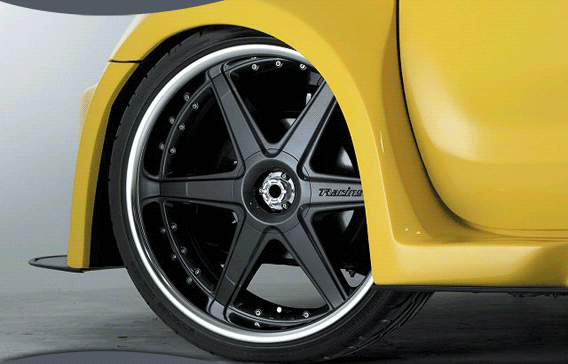 |
|
 |
|
| Understanding
the relationship between rims and rubber. Before you buy wheels, itís important to get a better education on the versatile subject. We have prepared a detailed breakdown of wheel specifications. We've also created a detailed outline of the measurements that you should better understand, whether you are a consumer, an enthusiast, or an aftermarket wheels distributor. To better appreciate the relationship between a wheel and a tire, with 24 inch wheels for example, you have to understand the mechanical characteristic of their union. Let's face it, there's no other single component more important than your wheels and tires because the entire car rests on their weight. Our detailed breakdown includes helpful charts, a glossary of wheel and tire measurement terms, and information on wheel alignment, centering, and offset. If you are ready to buy rims, we hope you will enjoy reading all about wheel and tire dynamics. |
|
WHEEL
& TIRE DYNAMICS 1. OVERALL WIDTH This defines the overall width of a tire, width is measured from the inner to the outer sidewall. If your tire has a lip bead (or protective rib or raised lettring) then this is included in the measurement. 2. SECTION WIDTH This is the measurement of the tires width from sidewall to sidewall (not including the protective ribs). It is important that this measurement be taken when the tires are properly mounted and inflated with no load on the tires. 3 FREE RADIUS This is the distance from the wheel's axle center to the outer tread surface of the unloaded and properly inflated tire. 4. RIM WIDTH This is the linear distance between the outer and inner rim flanges on which the tire bead rests. 5. STATIC LOAD RADIUS This measurements is measured with load on the tire and is taken from the axle centerline to the treat contact area or patch. 6. DEFLECTION The measured difference between the tire's free radius and the loaded radius when mounted on a rim which is inflated to test pressure and under a prescribed or predeterminded load 7. TREAD WIDTH The distance from the outer edge to the inner edge of the tread. 8. TREAD RADIUS The design curvature or contour of the tread profile. 9. SECTION HEIGHT This measurement off of he vertical distance between the tire's bead seat and outer tread surface when properly mounted and inflated with no load on tire. 10. NORMAL RIM DIAMETER This is measured as a linear distance between the bead seats which are taken at the widest point. 11. OVERALL DIAMETER You probably don't need help understanding this but it's the distance from the tread surfaces at its widest point. The tire should be aired to the prescribed air pressure and under no load. 12. RAISED LETTER |
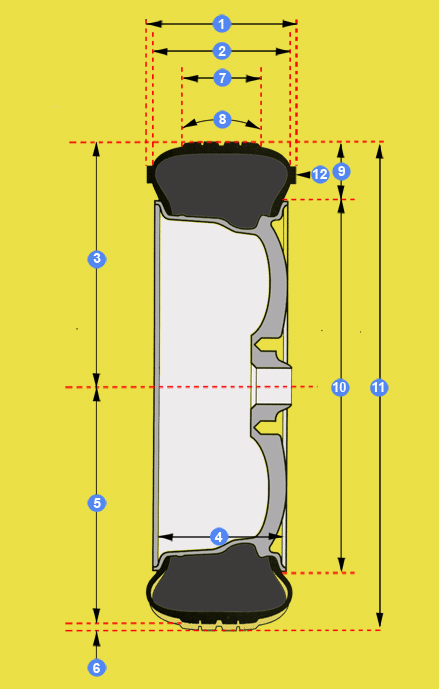 |
WHEEL
ALIGNMENT
Having
the appropriate adjustments will maximize the life of your tires. In
a nutshell, wheel alignment consists of adjusting the angles of the
wheels so that they're perpendicular to the ground and parallel to each
other. The purpose of having the appropriate adjustments is the maximize
tire life. In short, you want a vehicle that tracks straight and true
when you are driving alone a straight and level road. |
|||
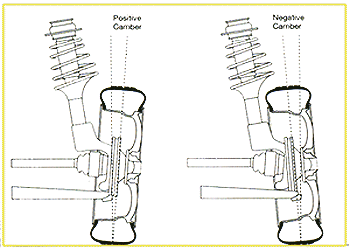 |
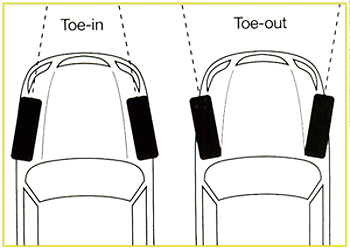 |
||
|
|
||
|
|
|||||
|
|
CENTERING & OFFSET Get
a better understanding of the wheels on you car. |
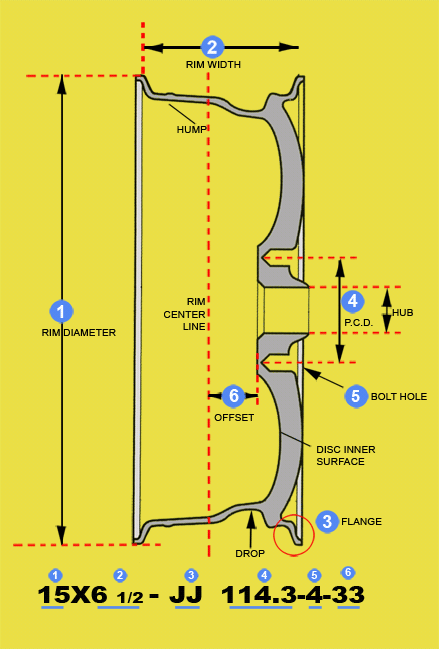 |
From coded markings to technical descriptions, theis simple guide will give you a better understanding of the wheel and the terminology which comes along with it. RIM MARKINGS Look
inside almost any wheel and you should find various markings which give
you pertinent information on the wheel. Typicaly, they're marked on
the rim and, just for conversation sake, we will take into consideration
a wheel whick is marked "15x6 1/2 JJ114.3". The first number
is equite obvious and represents that the wheel is 15 inches in diameter,
while "6 1/2" is the width of the wheel and measured from
the distance between the flanges that support the bead. The "JJ"
refers to the space of that flange; easier to understand if you imagine
a steel wheel on which the lip is rolled over like a JJ. "ET"
may or may not be present, and if you do see it is the abbreviation
of einpress tief, German that translates literally as "pushed in
depth," or offset. The "33" is the offset measurement. |
CENTERING The other element that affects directly whether a wheel can be bolted onto a car is hubcentricity. Long ago, in the deep mists of time, wheels were located by taper of the lug nuts or bolts. This could lead to all sorts of problems, but they can be summarized by saying centering was liable to be less than perfect, and the sheer stress on wheel bolts or studs could be enormous. We are not aware of any passenger car wheels now made that are not hubcentric. Hubcentric wheels have a hole at their center that fits closely over a round feature on the hub, serving to center the wheel on the axis of the spindle, as well as bear the verical weight of the vehicle. The wheel bolts or studs then serve simply to hold the wheel onto the hub, and are loaded only in tension, where they are strong. If the studs were required to absorb vertical forces, they would be loaded in single shear, the weakest arrangement for any fastener. Factory wheels are all machined to fit their specific application exactly, and some for the better aftermarket wheels are, too. However, many aftermarket wheels rely on centering rings. This means that, instead of machining wheels specifically for each O.E. centering rings. This means that, instead of machining wheels specifically for each O.E. centering hole diameter, the wheel manufacturer machines all wheels to one size, and then uses inserts to gives a centering surface of the diameter required for each application. This is obviously easier to do, and makes inventorying a complete wheel line much simpler and less costly If you buy wheels that use centering rings, be sure that the rings fit snugly in the wheels. if they are loose enough to fall out, how accurately can they be locating your wheel? Some tire shops automatically remove centering rings to balance wheel, just to make sure that there is no slop to make their balancing inaccurate. The fact that a wheel physically bolts onto a car doesn't necessarily mean that it "fits." The centering surface could be too large, in which case therels essentiallly no centering. Just as importantly, the offset could be wrong.
|
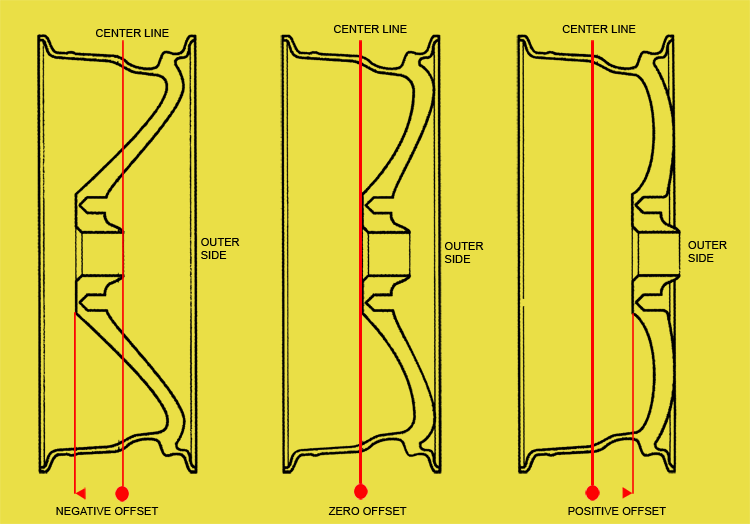 |
OFFSET Offset is the location of the flat mountin surface of a wheel relative to the wheel's centerline. Negative offset means that the mounting surface is toward the center of the car, postive offset means that it's toward the ouside of the car, or the wheel is "pulled in" toward the center. Offset affects many things other than just whether the wheel has the appearance of "sticking out" past the fender. The wrong offset can causerubbing problems when the suspension is compressed of the wheel is turned. Offset affects the steering geometry's scrub radius, possibly leading to problems with torque steer or self-centering characteristics. Offset also affects the suspension's motion ratio, which directly determines the effective spring and damper rates. Potentially, in a very heavily loaded vehicle, or with extreme changes in offset, wheel bearing life can be affected, but this is more often talked about by truck people than by small car enthusiasts. It is very, very important that the proper offset wheel be used. While not directly a matter of offset, brake caliper clearance is a related issue. If you have, or plan t have big brakes on your car, be sure that you wheels that you are going to use, will fit over the calliper. Spacers are available to solve the problem if they don't, but it is best to get a wheel with enough dish to met your offset specs and still fit your brakes. Consulting the wheel and brake manufacturers ahead of time is wise. Many aftermarket brake companies even have templates of their brakes available that you can easily check against any wheel. |
WHEEL (RIM) TYPES Wheels can be categorized according to the cross-section shape. Passenger car tires usually employ a drop-centric rim. Here's a few examples of the main types. |
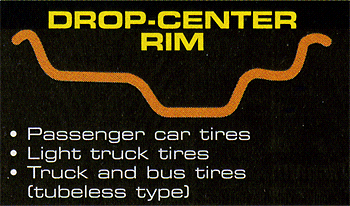 |
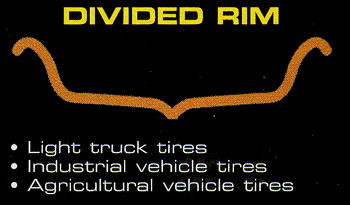 |
|
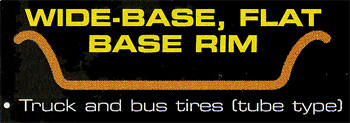 |
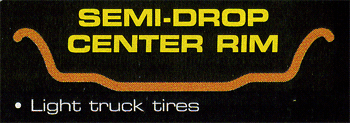 |
|
The P.C.D. (Pitch Circle Diameter), oftern reffered to as the "bolt pattern," refers to the pitch circl diameter of the bolt holes. The value varies depending on the vehicle type. For example: PASSENGER CAR: 114.3MM, 100MM and 139.7MM TRUCK AND BUS: 225.25MM, 285MM, 285.75MM and 335MM The number of bolt holes is usually four, five or six for passenger car tires. Some aluminum wheels available on the market are multi-hole whees, such as the nine-hole type that has for specialists to find out your P.C.D., but if you're more of a hands-on person then you can always use aftermarket toosl and measurements to do so. The bolt pattern or bolt circle is the diameter of an imaginary circle formed by the centers of the wheels lugs. Bolt pattern can be four-, five-, six- or eight-lug holes. A bolt circle of 4x100 would indicate a four-lug pattern on a circle with a diameter of 100m.
|
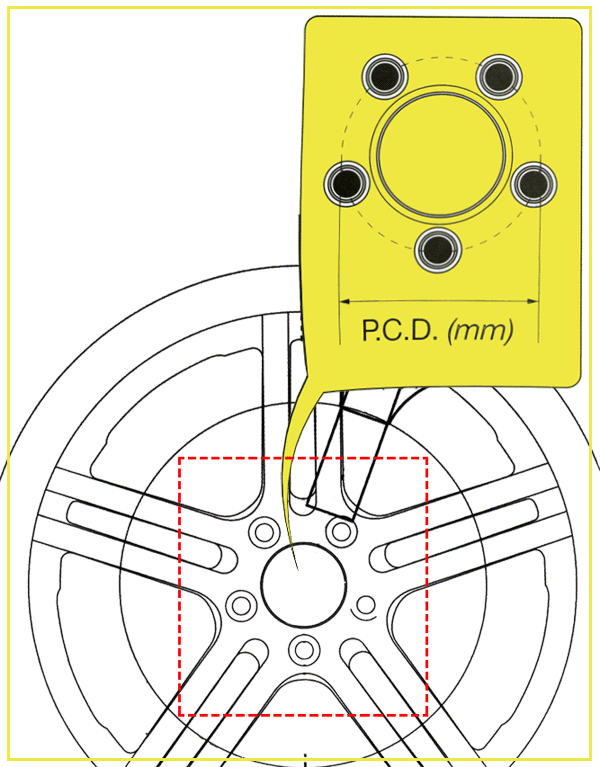 |
||
inches 4 x 3.93 4 x 4.25 4 x 4.33 4 x 4.50 4 x 5.12 4 x 5.51 5 x 4.00 5 x 4.25 5 x 4.50 5 x 4.53 5 x 4.72 5 x 4.75 5 x 5x12
|
-Milimeters - 4 x 100 - 4 x 107.95 - 4 x 110 - 4 x 114.3 - 4 x 130 - 4 x 140 - 5 x 100 - 5 x 107.95 - 5 x 114.3 - 5 x 115 - 5 x 120 - 5 x 120.65 - 5 x 130 |
|
|
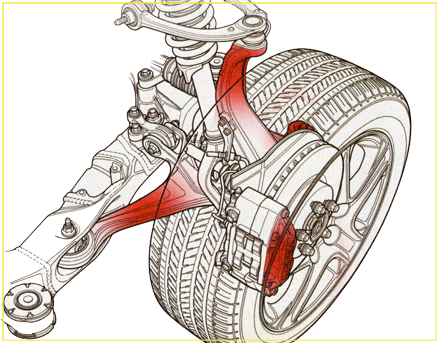 |
When upsizing your rim on a vehicle it is also important to consider the following: - Be sure that there is no contact with the tire and the inner fender liner. - Be sure ther is no contact on any control arms, spring perch, or any other obstructions that may be there. - Be sure that the case nut under the spring perch does not touch the top or inner sidewall of the tire. As the tires heat heat up they will expand so keep that in mind - Be sure that the inner lips on your fender does not contact any part of the tire while driving straight, during compression or hard cornering. |
|
_____________________________________________________________________________________________ KATANA WHEELS | DOLCE WHEELS | NINJA WHEELS | PRIVACY POLICY SITE MAP COPYRIGHT 2006 WHEELS AND TIRES DISTRIBUTOR. ALL RIGHTS RESERVED. DOLCE WHEELS IS DIVISION OF WTD |